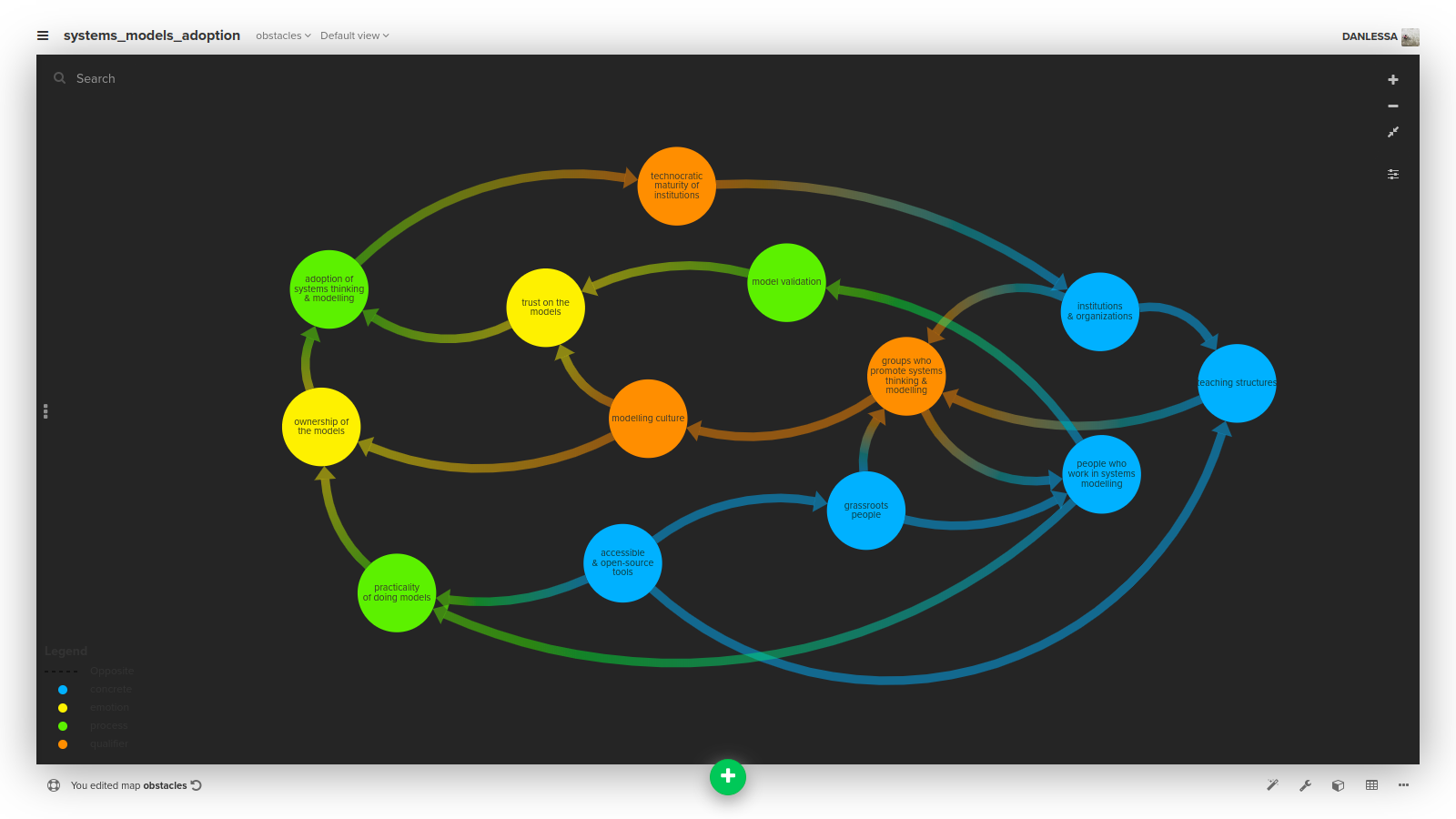The situation and obstacles regarding Systems Thinking & Modelling adoption on São Paulo / Brazil institutions
Yesterday I went to an Systems Thinking & Modelling workshop at the Institute of Advanced Studies - University of São Paulo, and I got in touch with several academic and decision-making people here at São Paulo, and it was very interesting because I collected a lot of feedback as for the state of adoption of systems models in general on our local structures. The main feedbacks were:
- Systems thinking and modelling are fundamental for an institutional agency to be mature in an truly technocratic fashion
- The main barrier for the institutional adoption of systems models is normally the lack of an modelling culture in the people who work at the agencies, which leads to lack of ownership and distrust
- The lack of modelling culture and lack of ownership is mainly caused due to an lack of institutions and groups who promote systems modelling tools and techniques
- There is a very real practical difficulty in attracting people to SM as the academic structure doesn’t have enough space for it. Additionally, grassroots adoption is hard because most of the tools for doing it are proprietary, outdated and non-modular.
- Lack of people working on SM means that there is little people for validating SM. This leads to models which reproduces the “trash in, trash out” mantra, as well as making the whole process ludicrously expensive and hard to justify for an public institution.
I felt that there is a lot of good-will and faith in the potential of SM around here, but that the people don’t know what it does need to make it effective in light of public decision-making. Also, during my interactions with the students, I felt that a lot of them are very interested in using SM on their research problems, but they all stumbled in the same problem: doing Systems modelling in an quantitative, transparent, open-sourced / open-data manner while being integrated with the modern science paradigms (big data / IoT) simply isn’t feasible right now. The tools which are the closest for doing that are paid and non-modular, and the ecosystem of open-source tools is simply too fragmented.
This kind of situation makes me belive that cadCAD has an extremely bright future on research and decision-making if we are able to make it more “batteries-included” sometime and somehow. I’ve included an sketch of an system model for systems model adoption based on this description.
